Australia is the largest exporter of goat meat in the world (despite accounting for about 1% of the world’s goat production). The Australian goat industry continues to grow and develop to meet the growing global demand for goat meat, dairy products, and fiber. Goats have a long history in Australia, beginning with the arrival of the First Fleet in 1788 and being farmed for their milk, meat, and fiber. Let’s check out more information about Goat farming in Australia.
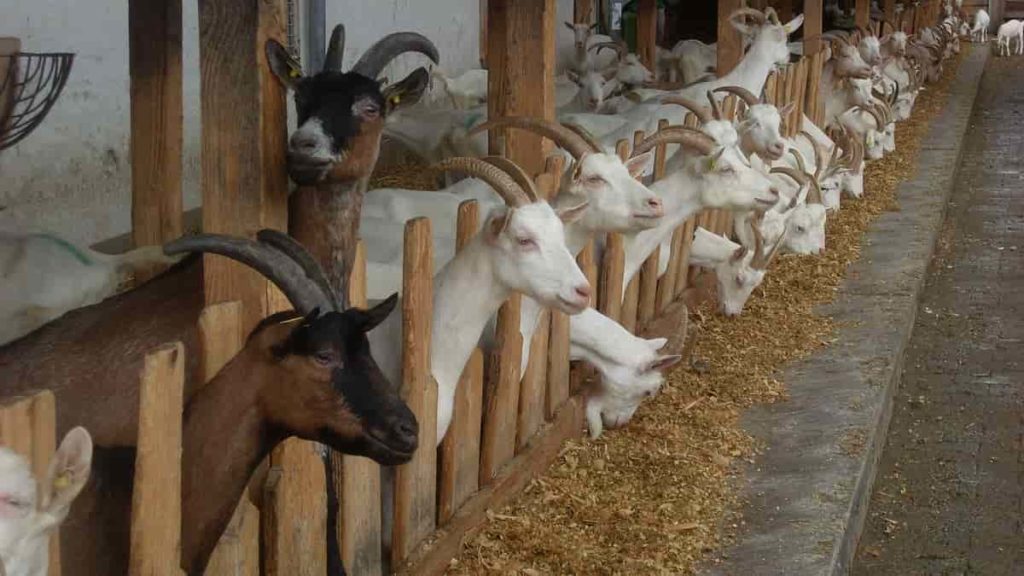
Goat farming is a relatively small industry in Australia compared to cattle and sheep but has seen a significant increase in recent years. As one of the first pets, goats have been used for their meat, wool, skins, and milk for over two thousand years. According to Meat and Livestock Australia, Australian goat meat exports account for about 36% of global goat meat exports.
Australia produced about 15,500 tonnes of goat meat in 2020, accounting for only 0.6% of all Australian red meat production. However, with over 80% offshore shipping, this is not a popular choice among Australian consumers.
Goat farming in Australia
Infrastructure requirements for fiber goat production
- Shelter in cold humid environments and shade in hot climates
- Yards and handling equipment standard sheep yards are suitable for fiber goats.
- Shearing equipment and facilities
- A good source of water
- Robust wire or electric fencing is a good standard Merino fence, if not narrow and there is no space under the wires, is sufficient for goats. If the goats are run in grazing cells, five wires of the electric fence are enough but not completely safe.
Dairy goat farming practices
In Australia, dairy goat’s milk is usually sold as fresh milk or used to make cheese, yogurt, or milk powder. Australia is known for producing high-quality special goat cheese products. Although most dairy products are domestically sold, the export market is likely to expand. Australia has developed many new breeds of dairy goats that have been recognized for their milk production.
In case you miss this: How this Farmer Made 5 Lakh Profit From His Goat Farm – A Success Story
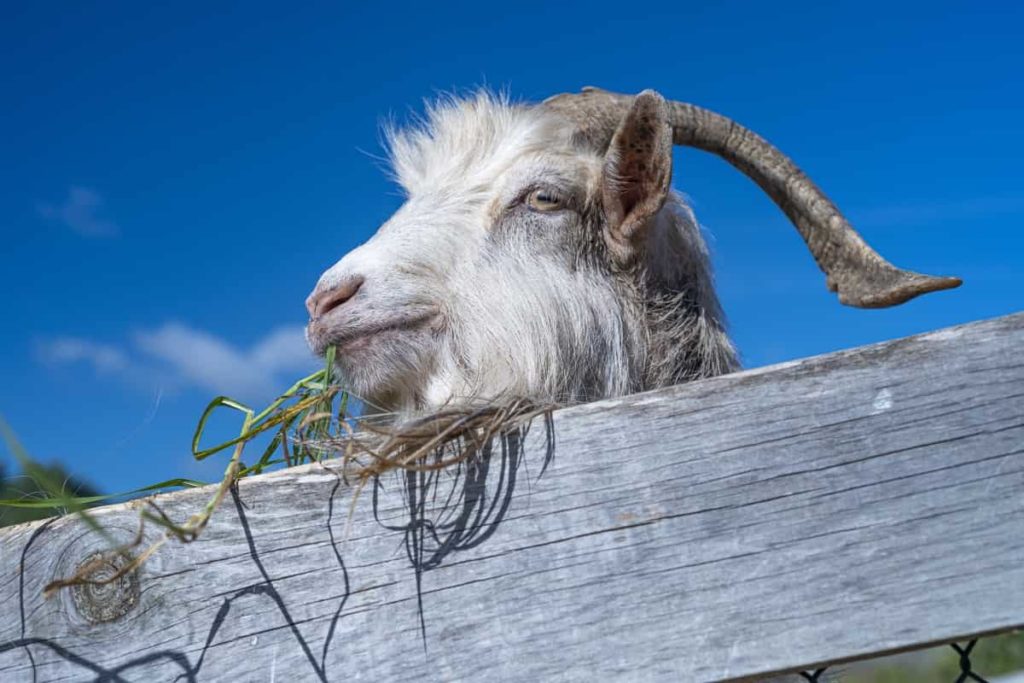
Goat’s milk products are gaining popularity because of their health benefits and their ability to meet the needs of people with intolerance to cow’s milk. Goat’s milk contains a small fat globule, and protein different from cow’s milk, so people who are intolerant of cow’s milk can often consume goat’s milk.
Dairy goat facts and figures
- An estimated Australian goat’s milk production is approximately 16 million liters per year with an estimated farm gate value of $ 20 million. Approximately, there are 68 dairy goat farms and 15 goat milk factories in Australia. A large portion of dairy goat farms process their milk and supply it directly to wholesalers.
- Dairy goat farms are located in every state of Australia.
- Male goats are called bucks, females are called doe, and babies are called kids.
- Usually does forms a single pregnancy and gives birth to two kids.
- At peak lactation, females can produce 4L of milk per day.
- Protein and fat in goat’s milk are more easily digested than cow’s milk.
Housing management
Goats require less land than cows. Dairy goats can be kept free-range or in barns, intensively or extensively in farming. All types of housing should be kept clean, dry, and well-ventilated. Indoor housing usually has mud or straw-covered floors and allows goats access to outdoor exercise areas. The feed troughs are open, allowing the goats to graze all day.
Both indoor and outdoor housing require solid and well-maintained fencing. Goats are lively and can jump or squeeze by fencing which other livestock cannot. The combination of a hinge joint and an electric fence is an effective solution. Outside goats will look for pastures, shrubs, and other field plants. Shelter, shade, and watering places need to be provided.
Goat breeds in Australia
Goat fiber comes from several breeds of goats in Australia. They are – Cashmere, Australian Rangeland Goats, Boer, and Angora.
Angora
Angora goats are fiber goats in Australia. Angora goats make a simple mohair fleece – a very long (120-150 mm), shiny, and resilient luxury fiber, which can be blended with other natural or synthetic fibers to give the finished fabric texture and shine.
Cashmere
Cashmere goat produces significantly less fiber than Angora goats (6 kg per year with two shears for Angora goats and about 200 grams per head for Cashmere goats).
Australian Rangeland Goats
The Australian Rangeland goats are otherwise known as the Australian Feral Goats or Wild Goats. This breed is very popular in Australia and is exported worldwide as meat and live animals.
Boer Goat
The Boer goat belongs to the South African nomadic goats and was introduced to Australia in the late 1980s and was released from quarantine in 1993 to raise a specialist meat breeding. The Boer goat is the only breed of goat that has been bred exclusively for meat and is recognized as the largest goat in the world. They are easily identified by their white body with distinctive brown heads.
In case you miss this: Goat Farming in Kenya: How to Sart for Meat, Dairy, PDF, and Guide
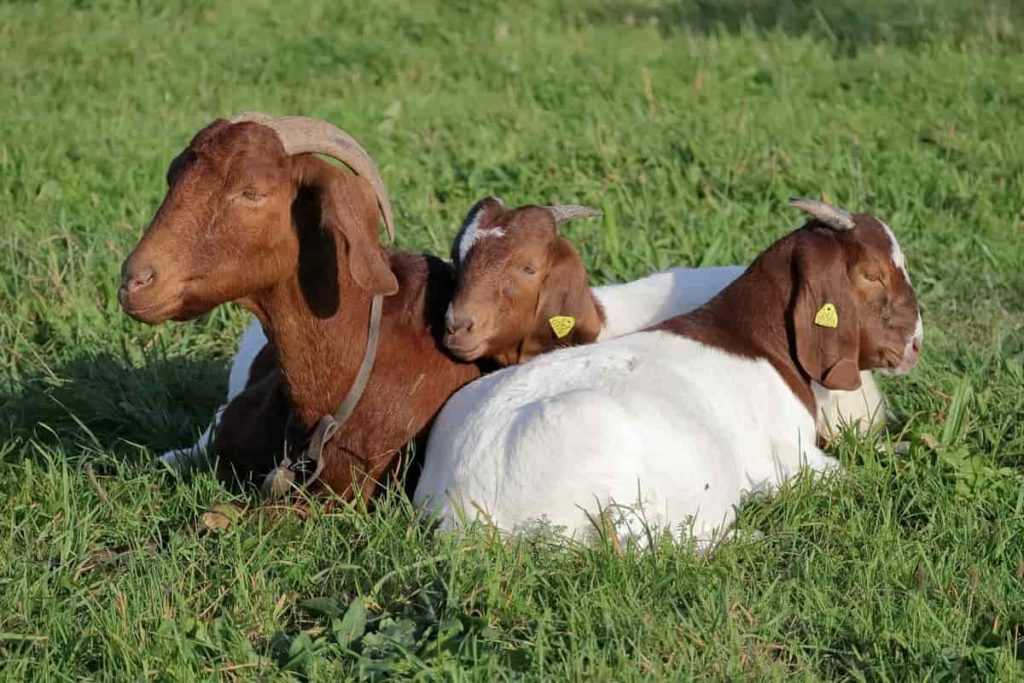
Dairy goat breeds in Australia
The Australian dairy goat industry is geographically diverse and well-adapted to meet the growing interest. In addition, the Australian Dairy Goat Industry provides a high-quality export market for stud dairy goats. Recognized breeds of dairy goats in Australia include the Saanen, Toggenburg, British Alpine, and Anglo-Nubian.
The former three are of Swiss breeds and are of Anglo-Nubian is from Indian and North African stock. Australian Melaan and Australian Brown are new breeds made in Australia. Other Breeds are Nigerian Dwarf, Lamancha, Alpine, and Sable.
Australian Melaan
Australian Melaan is a relatively new breed of goat that was officially recognized in 2000. Australian Milan is an intelligent breed and hardy and productive. Australian Melaan is adapted to Australia’s variable climate and can tolerate subtropical and temperate climates.
Saanen
Saanen is the largest breeding of dairy goats in Australia. They are white or cream, their skin is a short, smooth coat and tan. The Sons are known for their calm nature and their reliable production. Australian Saanen Stock has won an international award for milk production. The breed for tan skin has given this breed a better ability to withstand strong Australian sunlight and open conditions in which many goats are reared.
In case you miss this: Common Mistakes in Goat Farming: For First Time Goat Owners
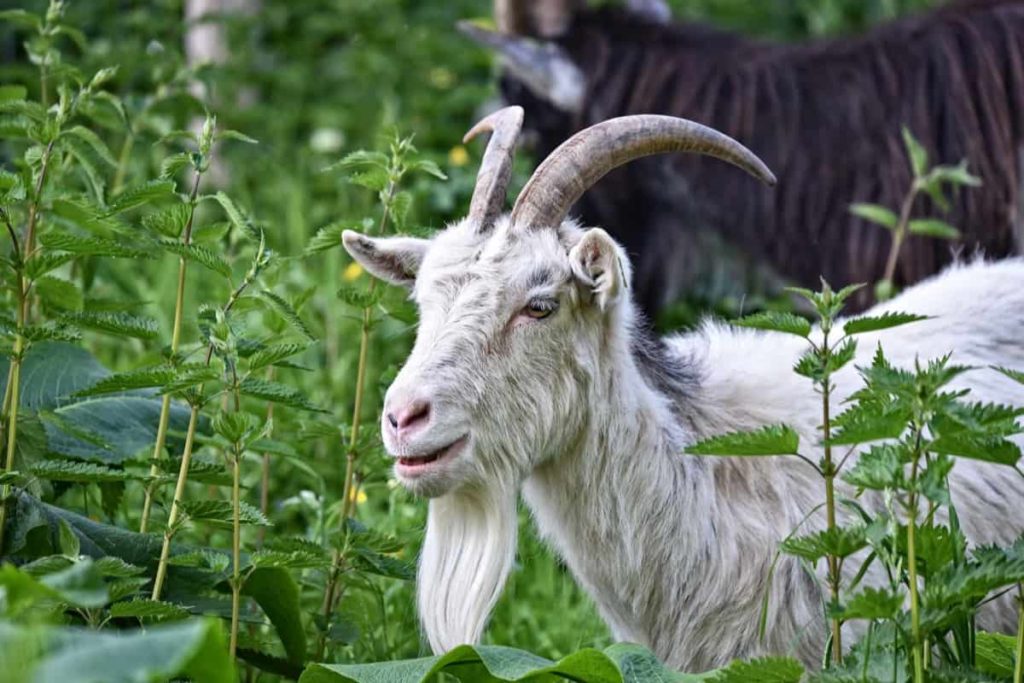
British Alpine
British Alpine has a shiny black coat with white stripes on the face, nose, and ears, and spots around the tail and lower legs. This breed is active and suitable for free-range (commercial) farms and is remarkably heat resistant. The British Alpines are capable of long-term lactation with good-quality milk.
Anglo-Nubian
Anglo-Nubians have short coats that have color and markings but do not have white Swiss markings. The breed’s Indian and North African heritage means that Anglo-Nubians are well-suited to Australia’s arid climate.
Toggenburg
Toggenburg goat is the oldest recognized breed of dairy milk. Animals are light fawn to chocolate in color, with white stripes on their noses and ears, and white spots around their tails and lower legs. Toggenburg goats are robust and hardy. This breed has a longer lactation period, but the volume of milk production may be lower than other Swiss breeds. Cold and temperate regions are preferred, but Toggenburg is found in a variety of Australian climates.
In case you miss this: Goat Farming Insurance in India, Companies, Policies, and Premiums
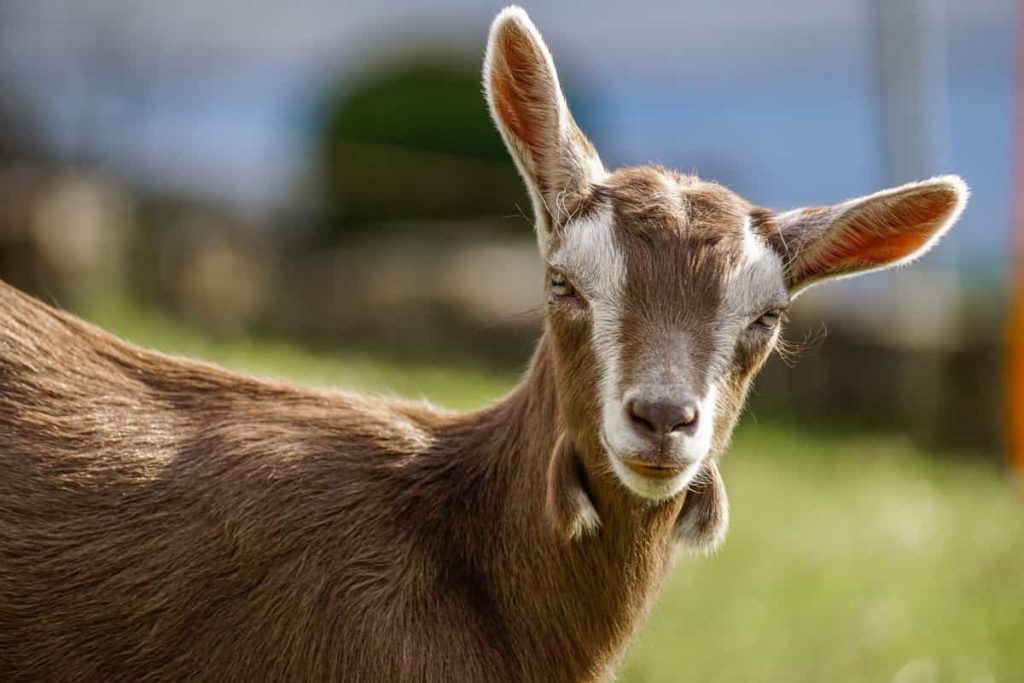
Australian Brown
Australian Brown is the latest breed of dairy goat in Australia, officially recognized in 2008. Australian browns are quiet and produce milky and solid milk like the British Alpines and Melaans.
GICA (Goat Industry Council of Australia)
It is designated as a Commodity Council of the Federation by the Federal Government. Under its charter as a Commodity Council, GICA has been specifically designated as an organization that develops a collective goat industry policy for all breeds. It is committed to the general health and welfare of Australian goat herds. Producers have a responsibility to take care of their livestock and if the health and well-being of an individual are compromised, it can have a detrimental effect on the entire industry.
Feed requirements
Goats will graze on many vegetation types and can digest fibrous plant material. Dairy goats are usually fed concentrated oats, barley, and bran with vegetation and grazing. Goats prefer not to eat off from the ground and instead prefer to look at the browsing bushes, tree plants, and weeds with elevated troughs. It is not possible to pick up the dropped feed. Since they are browsing animals, it is a good quality resource as pasture hay should be available at all times.
In case you miss this: Dairy Disease Symptoms and Treatment for Cows, Cattle, Goats, and Sheep
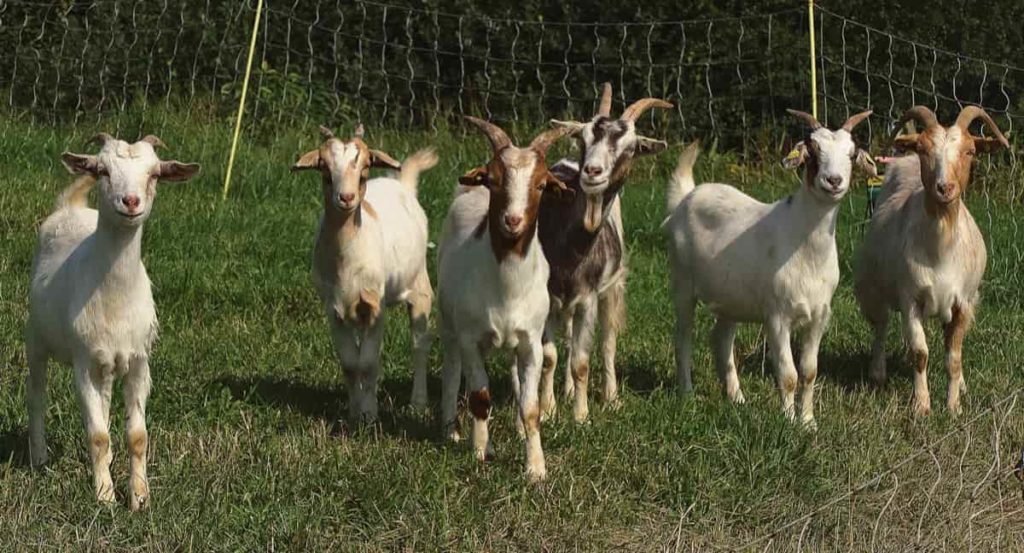
Energy and protein are important considerations when feeding goats. Lack of energy is a common cause of loss of productivity and lack of protein can limit the growth, milk production, and health of animals during pregnancy. Goat’s food directly affects the taste of their milk. Kids can drink milk from the teat or directly from the container. Kids need milk for at least six weeks before they can move on to solid foods.
Healthcare, Pests, and Diseases of Goats in Australia
Goats, especially lactating goats, are susceptible to many pests and diseases. Young animals are more prone to poor health, pests, and diseases than mature goats. Also, goats are sensitive to a range of weeds. Major diseases affecting dairy goats include worms, Johnes disease, Caprine Arthritis Encephalitis (CAE), hypocalcemia, pregnancy toxemia, mastitis, and caseous lymphadenitis.
Like all animals for production, the AVA (Australian Veterinary Association) recommends that you get your livestock from reputable suppliers. New additions to the herd will need to be quarantined before they can be introduced to other livestock on the property. Talk to your veterinarian about regular health checks and vaccines for goats.
Goats are prone to worms and must be drenched when necessary, dosing and frequency of drenching should be discussed with a veterinarian to suit the needs of your herd. Compared to sheep, they are more susceptible to tetanus and goiter (due to iodine deficiency).
Conclusion
Goat Farming Business has an excellent future in Australia. Goat meat, milk, and skin have very good demand in the market. You can develop a good goat farming business plan in Australia for high profits.
- Types of Pesticides Used in Agriculture: A Beginner’s Guide
- Economical Aquaculture: A Guide to Low-Budget Fish Farming
- 15 Common Planting Errors That Can Doom Your Fruit Trees
- How to Make Houseplants Bushy: Effective Tips and Ideas
- Innovative Strategies for Boosting Coconut Pollination and Yield
- Pollination Strategies for Maximum Pumpkin Yield
- The Complete Guide to Chicken Fattening: Strategies for Maximum Growth
- Natural Solutions for Tulip Problems: 100% Effective Remedies for Leaf and Bulb-Related Issues
- Revolutionizing Citrus Preservation: Towards a Healthier, Greener Future
- Natural Solutions for Peony Leaf and Flower Problems: 100% Effective Remedies
- Maximizing Profits with Avocado Contract Farming in India: A Comprehensive Guide
- Natural Solutions for Hydrangea Problems: 100% Effective Remedies for Leaf and Flowers
- The Ultimate Guide to Choosing the Perfect Foliage Friend: Bringing Life Indoors
- From Sunlight to Sustainability: 15 Ways to Use Solar Technology in Agriculture
- The Ultimate Guide to Dong Tao Chicken: Exploring from History to Raising
- The Eco-Friendly Makeover: How to Convert Your Unused Swimming Pool into a Fish Pond
- Mastering the Art of Delaware Chicken Farming: Essentials for Healthy Backyard Flocks
- 20 Best Homemade Fertilizers for Money Plant: DIY Recipes and Application Methods
- How to Craft a Comprehensive Free-Range Chicken Farming Business Plan
- Brighten Your Flock: Raising Easter Egger Chickens for Beauty and Bounty
- How to Optimize Your Poultry Egg Farm Business Plan with These Strategies
- Subsidy for Spirulina Cultivation: How Indian Government Schemes Encouraging Spirulina Farmers
- Ultimate Guide to Raising Dominique Chickens: Breeding, Feeding, Egg-Production, and Care
- Mastering the Art of Raising Jersey Giant Chickens: Care, Feeding, and More
- Ultimate Guide to Raising Legbar Chickens: Breeding, Farming Practices, Diet, Egg-Production
- How to Raise Welsummer Chickens: A Comprehensive Guide for Beginners
- How to Protect Indoor Plants in Winter: A Comprehensive Guide
- Ultimate Guide to Grow Bag Gardening: Tips, Tricks, and Planting Ideas for Urban Gardeners
- Guide to Lotus Cultivation: How to Propagate, Plant, Grow, Care, Cost, and Profit
- Agriculture Drone Subsidy Scheme: Government Kisan Subsidy, License, and How to Apply Online
- Ultimate Guide to Raising Araucana Chickens: Breed Profile, Farming Economics, Diet, and Care
- Bringing Hydroponics to Classroom: Importance, Benefits of Learning for School Students
- Ultimate Guide to Raising Polish Chickens: Breed Profile, Farming Economics, Diet, and Care
- Ultimate Guide to Raising Australorp Chickens: Profile, Farming Economics, Egg Production, Diet, and Care
- Silkie Chicken Farming: Raising Practices, Varieties, Egg Production, Diet, and Care
- Sussex Chicken Farming: Raising Practices, Varieties, Egg Production, Diet and Care
Ihave learn something